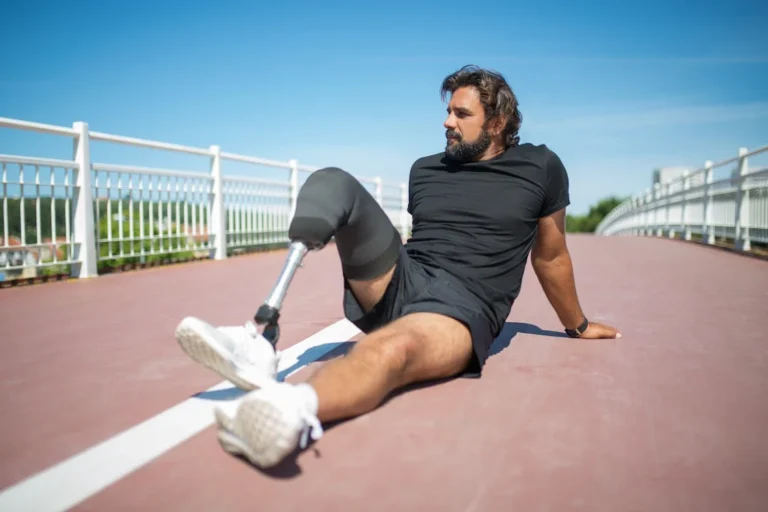Who Is Barbara Kingston?
Barbara Kingston is a name many health enthusiasts recognize, particularly for her resilience and unyielding optimism in the face of immense personal challenges. Known for her inspiring advocacy in the wellness community, Barbara’s name sparked global attention when she shared her story about a life-changing medical decision—amputating her leg.
Barbara, a fitness enthusiast, advocate, and public speaker, has turned what seemed like an insurmountable hardship into an opportunity to inspire others. Her story exemplifies bravery, physical determination, and the importance of community in navigating life’s toughest health challenges.
But why did Barbara Kingston choose amputation, and how has this decision reshaped her life and perspective? Let’s take a closer look.
Understanding the Health Condition That Led to the Amputation
Barbara’s decision to amputate her leg didn’t happen overnight—it was the result of years of battling a severe and complex health diagnosis. She developed a rare vascular condition that significantly limited the blood flow to her leg, causing chronic pain, immobility, and a decline in her overall quality of life.
Despite attempting numerous treatments, including physiotherapy and surgery, Barbara’s condition didn’t improve. Doctors warned that leaving the issue unresolved could lead to complications like gangrene or systemic infection. Faced with diminishing options and worsening physical health, she began to consider amputation as a medically valid and potentially life-altering solution.
This part of Barbara’s story sheds light on the physical and emotional turmoil that patients with chronic conditions often experience. Facing choices that could forever alter one’s body is no small feat—it requires immense courage, research, and trust in medical professionals.
The Decision-Making Process for Amputation
Medical professionals say that deciding to amputate a limb is often one of the most agonizing choices a person can make. For Barbara, this decision came after years of careful deliberation, consultations with experts, and leaning on loved ones for emotional support.
Barbara shares that her turning point was shifting her mindset. Rather than focusing on what she was losing, she envisioned what she could gain—freedom from debilitating pain, the possibility of greater mobility, and the chance to rebuild her lifestyle.
Working closely with specialists, she explored options, including advanced prosthetic technology, which assured her that life post-amputation could still be active and fulfilling.
Her story isn’t just about making a hard choice; it’s about taking control and viewing health challenges through the lens of opportunity.
Life After Amputation: Physical and Mental Health Considerations
Amputation is more than just a physical procedure—it comes with emotional and mental challenges as well. For Barbara, the months following her surgery were focused on recovery, adapting to her prosthetic leg, and redefining her daily activities.
Physical Rehabilitation
Barbara’s fitness-oriented background gave her an edge when it came to rehabilitation. She embraced a rigorous physical therapy routine, pushing through discomfort and setbacks to regain her mobility. With the help of skilled therapists and a supportive medical team, she gradually learned how to walk again and even return to activities she once loved, like hiking.
Emotional Resilience
Emotionally, Barbara leaned on mindfulness techniques, therapy, and the support of her friends and family. She openly talks about the psychological rollercoaster that often accompanies limb loss—self-doubt, identity struggles, and moments of grief.
What made the difference for her was cultivating a mindset focused on gratitude and progress. “Every step I take now is a victory,” she often says.
The Role of Technology in Prosthetics and Improving Quality of Life
Barbara’s post-amputation life shines a light on how advancements in prosthetic technology are revolutionizing the way we view limb loss.
Her custom prosthetic leg was designed with cutting-edge technology—lightweight materials, microprocessor-controlled joints, and even sensors that mimic natural movement. These innovations provided Barbara with greater freedom and reinforced the message that amputation is not the end, but a new beginning.
Current Innovations in Prosthetics
From bionic legs to 3D-printed prosthetics, technology continues to enhance mobility for those who’ve undergone amputations. Dynamic modeling, robotics, and AI integrations offer unprecedented precision and personalization. Such advances made it possible for Barbara to not only recover but thrive.
Barbara Kingston’s Advocacy and Impact on the Amputee Community
Barbara’s story didn’t end with her physical recovery—it blossomed into a significant platform for advocacy. She now speaks publicly about life as an amputee, promoting messages of resilience, hope, and empowerment.
She’s also become deeply involved in organizations that support amputees and individuals with disabilities, hosting workshops, sharing fitness tips, and connecting with others who feel isolated by their challenges.
Through her blog and social media platforms, Barbara routinely shares updates on her fitness progress and motivational advice, often emphasizing the importance of community and mental health. She has become a beacon of hope for many.
Tips for Supporting and Empowering Individuals Post-Amputation
Barbara’s journey offers valuable insights into how we can support individuals who’ve undergone amputation. Consider these actionable steps when trying to empower someone in a similar position:
- Encourage Open Communication: Listen to their concerns and allow them the space to express their thoughts without judgment.
- Offer Practical Help: Assist with day-to-day activities or help them connect with resources like physical therapists or support groups.
- Be Patient and Understanding: Recovery involves ups and downs. Progress might come in small increments, which requires patience.
- Introduce Them to Community Networks: Help them connect with advocacy groups, fitness communities, or individuals who’ve had similar experiences.
- Celebrate Their Wins: Whether it’s completing a physical milestone or simply feeling good about a new prosthetic, acknowledge their victories.
Why Resilience and Community Matter
Barbara Kingston’s story underscores a powerful truth about facing health challenges—resilience, positivity, and a sense of community can make anything possible.
Her willingness to share her amputation experience and advocate for others has sparked encouragement for countless individuals to look beyond their limitations and focus on growth.
